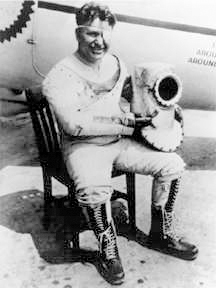Re: Jack Roush, NASCAR crashes second plane
With all respect, Jay, you fly the hardest plane to screw up in the history of aviation. I find your (and pretty much everyone else's) evaluation to be out of place.
Actually, the hardest plane to screw up is the Ercoupe. I own one of them, too... :wink2:
As for your Aztec being more difficult to fly than my Pathfinder, we'll have to agree to disagree, I guess. I've got a couple of hours in an Aztec, and other than having two of my O-540s (sucking up twice the gas, but only going 14 knots faster), and two more seats, I didn't find any appreciable difference between their flying qualities. Both are slow(ish) prop-driven, piston-engined antique airplanes.
In any event, your assessment of my evaluation might have merit if this accident had taken place in Iowa City, or Port Aransas -- but it occurred at Oshkosh, in front of the largest, most educated group of witnesses the NTSB could desire. I don't know anyone who hasn't said the same things I have said -- but I'll hold out hope that I'm wrong.
But I digress. There are really only two possible causes of Roush's crash:
1. Mechanical problem.
2. Pilot error.
Since the engines were reported to be running for "some time" after the plane slid to a halt, I think we can rule out engine failure or fuel exhaustion. I don't think that leaves too many other options other than #2, does it? Well, I suppose some sort of control failure is possible, but nothing in the photos indicates anything amiss in that department, and no one has mentioned it.
As to your assertion that "prop pilots" can't (or shouldn't) evaluate the crash of a transport class jet aircraft, well, that's just silly talk. This is the internet -- we can evaluate ANYTHING here...

Jack Roush made the unforgivable mistake of screwing up in front of thousands of pilots (and government officials) at OSH. Had this crash happened anywhere else, it would've been a matter of passing interest, barely worth a mention here. Because it happened where it happened, it's the talk of the town.











